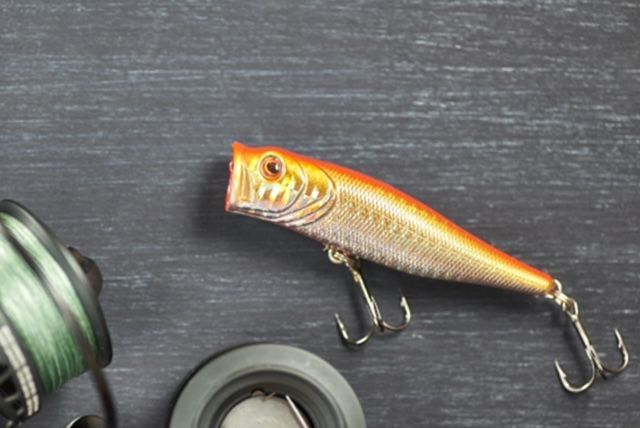your bait guide
All About that BASS
if you're new to bass fishing or just need a reminder of tips and tricks, then we got you covered!
understanding the various bait types and when to use them will help you make the right choice for your next fishing adventure

you favorite go-to
Crankbaits fall into three types, characterized by their lip: lipless, shallow diving, and deep diving.
Regardless of the lip, all crankbaits draw in bass through the production of sound and underwater vibrations. Both an outcome of their wobble and bouncing the lure off submerged structures or cover.
WHEN & WHERE TO USE CRANKBAITS
Each crankbait style is best used under slightly types of cover and water conditions.
Bass are known to hunt deep water spots during hot summer months.
As you would expect, deep diving cranks are best fished in deep water and excel over offshore mounds and submerged creek beds. The deep diving crankbait is a powerful tool for locating and catching fish in the summer months when bass are known to hunt deep water spots.
Shallow diving crankbaits come in two forms: squarebilled and flat-sided.
Squarebill cranks can be fished in dense cover such as weed beds or blowdowns and are best used with a fast retrieve. These factors make squarebills an excellent lure in warm, summer conditions when bass are actively pursuing bluegills and other large baitfish.
On the other hand, the tight wobble from a flat sided crankbait triggers bites year round. It can be retrieved at different speeds and a great cold-water lure well suited for fishing stump fields or mudflats. Flat sided crankbaits look and act more natural than other lures, and produces a different vibration than round crankbaits. When the shallows have been pounded by fisherman throwing fat squarbill crankbaits, the flat sided crankbait retrieved at high speeds will trigger bites from those pressured bass.
Lipless crankbaits are best fished on hard or rocky bottoms. In these conditions, the crank is often used to mimic a crayfish jumping away from a predator. Lipless cranks are generally used in cooler months, such as early spring or late fall.

a perfect snack
Jerkbaits mimic slow moving baitfish early in the season and is a lure you can work as slowly or as quickly as you'd like. They are retrieved with a jerk jerk pause to make sure the lure darts around and suspends in the water. the colder the water is,the longer you want to pause.

The term ‘topwater lure’ can refer to many different lure styles. The most common are poppers, spooks, and frogs. Both poppers and spooks are hard bodied lures with treble hooks to accommodate a strike from below.
Poppers and spooks work by creating a commotion on the water’s surface, similar to that of a wounded baitfish. Topwater lures allow anglers to fish a wide area regardless of the time of day.
WHEN & WHERE TO USE TOPWATER LURES
Topwater lures are a good option when fishing shallow shorelines, weedlines, or just about anywhere where bass are known to ambush their target from below. Topwater bass lures rely heavily on the sound produced during the retrieve, meaning they are effective in overcast and nighttime conditions.
These lures depend on bass chasing or ambushing them, so they work well when the fish have a lot of energy – making summer and early fall great times to use them.
HOW TO USE TOPWATER LURES
Some topwater baits like jitterbugs and wopperploppers are best fished with a steady and constant retrieve. Others, such as poppers, are best fished by bouncing the rod tip, pausing, reeling in, and repeating the process.
For spooks, the most popular retrieve is known as “walking the dog”.
